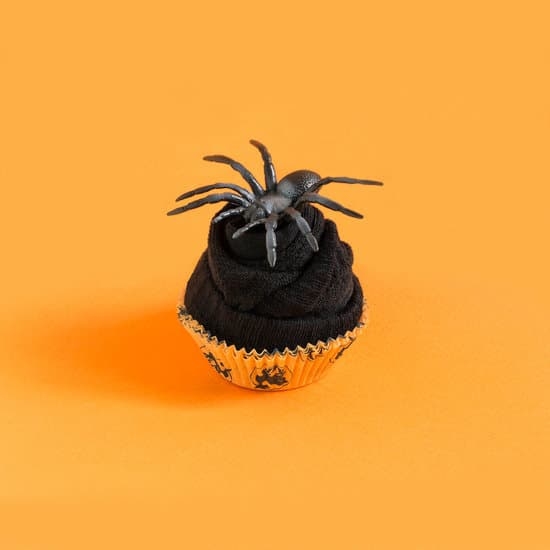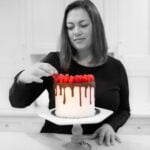Decorating a fondant cake is an art form that allows for endless creative possibilities. Fondant cakes are not only visually stunning but also offer a smooth and polished finish that is perfect for any special occasion. Whether you’re a beginner looking to explore the world of fondant cake decorating or a seasoned pro looking to brush up on your skills, this guide will provide you with all the essentials needed to create beautifully decorated cakes.
As you delve into the world of fondant cake decorating, it’s essential to familiarize yourself with the tools and equipment needed to bring your designs to life. From rolling pins and fondant smoothers to piping bags and modeling tools, having the right supplies at your disposal can make all the difference in achieving a professional-looking finish. Additionally, understanding how to properly prepare and work with fondant is crucial for ensuring a flawless result.
In this beginner’s guide, we’ll take you through the process of preparing fondant, choosing colors and themes that complement your design, covering a cake with fondant in easy steps, adding texture and dimension for visual interest, as well as exploring advanced techniques like sculpting, painting, and airbrushing.
By the end of this guide, you’ll feel confident in troubleshooting common issues that may arise during the decorating process and be inspired by the latest trends in fondant cake decoration.
Let’s dive in and unleash your creativity.
Tools and Equipment Needed for Decorating a Fondant Cake
When it comes to decorating a fondant cake, having the right tools and equipment is essential for achieving professional-looking results. There are a few key items that every aspiring cake decorator should have in their arsenal.
First and foremost, a good quality rolling pin is a must-have for working with fondant. Look for a non-stick silicone rolling pin that will make it easier to roll out the fondant smoothly. Additionally, invest in a sharp knife or pizza cutter for trimming excess fondant and creating clean edges on your cake.
Another important tool for decorating a fondant cake is a set of fondant or gum paste modeling tools. These tools come in various shapes and sizes to help you create intricate details, patterns, and textures on your cake. They are perfect for sculpting flowers, leaves, figures, or any other decorations you can imagine.
In addition to the essentials mentioned above, some other useful tools for decorating a fondant cake include a straight edge smoother for achieving smooth surfaces on the cake, edible food colors and brushes for painting details, and assorted cutters and embossers for adding decorative elements. Having these tools at your disposal will make the process of decorating a fondant cake much more enjoyable and successful.
| Tools | Equipment |
|---|---|
| Rolling Pin | Fondant Modeling Tools |
| Sharp Knife/Pizza Cutter | Straight Edge Smoother |
| Edible Food Colors & Brushes | Cutters & Embossers |
Preparing the Fondant
When it comes to decorating a fondant cake, one of the most crucial steps is preparing the fondant itself. Achieving a smooth finish on your fondant can make all the difference in the final look of your cake. Here are some tips and tricks to help you achieve that flawless finish on your fondant masterpiece.
Kneading and Rolling Out Fondant
Before you start decorating your fondant cake, ensure that you knead the fondant properly to make it smooth and pliable. This will help eliminate any air pockets and cracks as you roll out the fondant. Use powdered sugar or cornstarch for dusting your work surface to prevent sticking while rolling out the fondant. Roll out the fondant evenly to a thickness of about 1/4 inch or as desired for your design.
Applying Fondant to Your Cake
When covering your cake with fondant, make sure your frosted cake is chilled but not too cold as it can cause condensation when covered with fondant. Lift the rolled-out fondant with a rolling pin and carefully drape it over the cake. Smooth out any wrinkles or air bubbles by gently pressing from the top down and then working towards the sides. Trim off any excess fondant at the base of the cake for a neat finish.
Preventing Elephant Skin and Cracking
To avoid elephant skin (wrinkling) on your fondant, avoid stretching it too much while applying it to the cake. If you notice any small cracks forming as you work with the fondant, gently rub some vegetable shortening on them to help mend them seamlessly. Keep in mind that practice makes perfect when it comes to achieving a smooth finish on your decorated fondant cake, so don’t be discouraged by initial imperfections.
Choosing the Right Colors and Themes for Your Fondant Cake
When it comes to decorating a fondant cake, selecting the right colors and themes is crucial in creating a visually appealing design. The color scheme you choose can set the tone for the entire cake, whether you’re going for a vibrant and playful look or a more elegant and sophisticated style. Here are some tips to help you choose the perfect colors and themes for your next fondant cake creation:
- Consider the Occasion: Whether you’re decorating a fondant cake for a birthday, wedding, or other special event, consider the occasion when selecting your colors and themes. For example, pastel shades and floral designs are perfect for a springtime wedding cake, while bold colors and geometric patterns may be more suitable for a modern birthday cake.
- Use Color Theory: Understanding basic color theory can help you create harmonious color combinations for your fondant cake. Experiment with complementary colors (colors opposite each other on the color wheel) or analogous colors (colors that are next to each other on the color wheel) to achieve a balanced and visually pleasing design.
- Personalize Your Design: When choosing colors and themes for your fondant cake, don’t be afraid to let your personality shine through. Consider incorporating elements that reflect your personal style or interests, whether it’s incorporating your favorite color palette or adding unique touches like hand-painted details or edible decorations.
By carefully selecting the right colors and themes for your fondant cake, you can elevate your design from ordinary to extraordinary. Experiment with different combinations, textures, and techniques to create a stunning masterpiece that will impress your family and friends at any celebration.
Step-by-Step Guide to Covering a Cake With Fondant
Covering a cake with fondant is one of the essential skills in decorating a fondant cake. It provides a smooth and professional-looking finish that can elevate the overall appearance of your creation. Whether you are a beginner or a seasoned baker, mastering this technique is crucial for achieving beautiful and visually appealing results. Here is a step-by-step guide to help you cover a cake with fondant like a pro:
- Prepare your cake: Start by ensuring your cake is properly baked, cooled, and leveled. Apply a crumb coat of frosting to create a smooth base for the fondant to adhere to.
- Roll out the fondant: Dust your work surface with powdered sugar or cornstarch to prevent sticking. Roll out the fondant into a thin, even circle larger than the size of your cake.
- Apply the fondant: Carefully lift the rolled-out fondant using a rolling pin and drape it over the top of the cake. Gently smooth out any air bubbles or wrinkles using a fondant smoother, starting from the center and working towards the edges.
Achieving a flawless finish when covering your cake with fondant takes practice and patience. With these step-by-step instructions, you can confidently decorate your cakes with professional-looking results that will impress your friends and family. Experiment with different colors, textures, and designs to create stunning masterpieces that are sure to be the highlight of any celebration.
Remember that practice makes perfect when it comes to decorating a fondant cake. Don’t be discouraged if your first attempts don’t turn out exactly as planned – keep practicing and refining your skills. Soon enough, you’ll be creating show-stopping cakes that will leave everyone in awe of your decorating abilities.
Adding Texture and Dimension to Your Fondant Cake Design
One popular way to add texture to a fondant cake is by using molds or impression mats. These tools allow you to create intricate patterns or designs on the surface of the fondant, giving it a unique look. You can also try using different piping tips to add small details or accents that will enhance the overall design. Another option is to use edible paints or dusts to create a painted effect on the fondant, adding depth and color variation.
In terms of adding dimension to your fondant cake design, you can experiment with layering different elements such as fondant cutouts, edible flowers, or sculpted figures. By creating layers within your design, you can make certain elements appear closer or farther away, adding a sense of realism and drama to your cake. Additionally, you can play with varying heights and shapes to create a more dynamic composition.
The key is to balance texture and dimension effectively so that each element complements the others without overwhelming the overall look of the cake. By incorporating these techniques into your decorating process, you can take your fondant cake design to the next level and create a truly show-stopping masterpiece that will leave a lasting impression on your guests.
Advanced Fondant Techniques
Taking your fondant cake decorating skills to the next level involves mastering advanced techniques such as sculpting, painting, and airbrushing. These methods allow you to create stunning designs and intricate details that will truly elevate your cake creations. Whether you are looking to add lifelike sculpted figures, intricate painted details, or seamless color transitions with an airbrush, these techniques will help you achieve professional-looking results.
Sculpting fondant allows you to bring three-dimensional elements to your cake design. From realistic flowers to adorable characters, sculpting gives you the freedom to create any shape or figure you desire. To sculpt with fondant, make sure to use a firm yet pliable fondant that holds its shape well.
Tools such as modeling tools and edible glue can help you achieve clean lines and secure different pieces together. Practice is key when it comes to sculpting, so don’t be afraid to experiment and refine your skills.
When it comes to painting on fondant cakes, the possibilities are endless. Edible food colors mixed with clear alcohol or lemon extract can be used for painting fine details or creating a watercolor effect on your cakes. From delicate lace patterns to bold abstract designs, painting opens up a whole new world of creativity for decorators.
Additionally, airbrushing is a popular technique for achieving smooth gradients of color and adding depth to your fondant creations. This method requires an airbrush machine and edible airbrush colors in order to spray even layers of color onto the cake surface.
| Advanced Technique | Description |
|---|---|
| Sculpting | Create three-dimensional elements like flowers or figures using firm yet pliable fondant. |
| Painting | Add fine details or achieve watercolor effects by using edible food colors mixed with alcohol. |
| Airbrushing | Use an airbrush machine with edible colors for smooth gradients and added depth on your cakes. |
Troubleshooting Common Issues When Decorating a Fondant Cake
Cracking and Tearing Fondant
One of the most common issues when decorating a fondant cake is cracking and tearing of the fondant. This can happen due to a few reasons, such as rolling out the fondant too thin or not kneading it properly before applying it to the cake.
To avoid this issue, make sure to knead the fondant thoroughly until it’s smooth and pliable. Additionally, be mindful of the thickness when rolling out the fondant – it should be about 1/4 inch thick for optimal results.
Air Bubbles Underneath Fondant
Another frequent problem that decorators encounter is air bubbles forming underneath the fondant once it’s applied to the cake. To prevent this issue, use a sharp pin or needle to gently poke any air bubbles that appear on the surface of the fondant.
Start from one edge and slowly work your way across, being careful not to create holes in the fondant. Alternatively, you can also use a smoothing tool to press out any trapped air as you apply the fondant to the cake.
Sweating or Sticky Fondant
Sweating or sticky fondant can occur when there’s excess moisture present, causing the surface of your decorated cake to become sticky or develop droplets. This issue commonly arises in high humidity environments or when refrigerating a finished fondant cake.
To tackle this problem, leave your decorated cake at room temperature for a while and allow the excess moisture to evaporate naturally. You can also try using a fan on low speed to help dry out any moisture on the cake’s surface without affecting its design.
Top Trends and Inspirations in Fondant Cake Decorating
In the world of cake decorating, fondant cakes have become increasingly popular due to their smooth finish and versatility in design. As a beginner in decorating a fondant cake, it’s essential to stay up-to-date with the latest trends and draw inspiration from various sources to keep your creations fresh and exciting.
Whether you’re looking to create a classic elegant design or a fun and whimsical theme, there are endless possibilities when it comes to decorating with fondant.
One of the top trends in fondant cake decorating is incorporating metallic elements such as gold or silver accents. These add a touch of luxury and sophistication to any cake design, making it perfect for special occasions like weddings or anniversary celebrations. Using edible metallic paints or dusts, you can create stunning effects that elevate your fondant cake from ordinary to extraordinary.
Another trend that has been gaining popularity in recent years is the use of hand-painted details on fondant cakes. This technique allows for more intricate designs and personalization, ensuring that each cake is truly unique. With a steady hand and a good eye for detail, you can create beautiful floral patterns, watercolor effects, or even intricate scenes on your fondant cake. Hand painting adds a personal touch that sets your creation apart from mass-produced cakes.
Conclusion
In conclusion, decorating a fondant cake can be both a rewarding and challenging experience for beginners and experienced bakers alike. It is essential to have the right tools and equipment, along with patience and creativity, to achieve a beautifully decorated cake. By following the step-by-step guide provided in this article, you can cover your cake with fondant smoothly and add texture and dimension to your design.
When choosing the colors and themes for your fondant cake, consider the occasion or recipient’s preferences to create a personalized masterpiece. Whether you are sculpting, painting, or airbrushing your design, remember to practice these advanced techniques to enhance the overall look of your cake. Additionally, troubleshooting common issues such as cracking or bulging fondant can help you overcome any challenges that may arise during the decorating process.
Ultimately, showcasing your fondant cake creation is a truly satisfying moment. By staying updated on top trends and seeking inspiration from other decorators, you can continue to improve your skills and create stunning cakes for any event. Remember that practice makes perfect when it comes to decorating a fondant cake, so don’t be afraid to experiment and let your creativity shine through in every masterpiece you create.
Frequently Asked Questions
How Do You Stick Decorations to a Fondant Cake?
Decorating a fondant cake involves gently pressing the decorations onto the surface of the fondant using edible glue or water. The key is to ensure that the decorations adhere securely without damaging the fondant.
What Do I Need to Decorate a Cake With Fondant?
To decorate a cake with fondant, you will need fondant icing, rolling pin, cornstarch or powdered sugar for dusting, fondant tools for shaping and detailing, edible colors for tinting the fondant, and any embellishments you want to add such as edible pearls or sprinkles.
How Far in Advance Can I Decorate a Fondant Cake?
You can decorate a fondant cake as far in advance as 2-3 days before serving. To ensure freshness and prevent any decorations from getting too soft or sticky, store the decorated cake in a cool, dry place away from direct sunlight or heat sources.
This timeframe allows you to focus on adding intricate details without compromising the quality of your creation.

Welcome to our cake decorating blog! My name is Destiny Flores, and I am the proud owner of a cake decorating business named Cake Karma. Our mission is to provide delicious, beautiful cakes for all occasions. We specialize in creating custom cakes that are tailored specifically to each customer’s individual needs and tastes.





